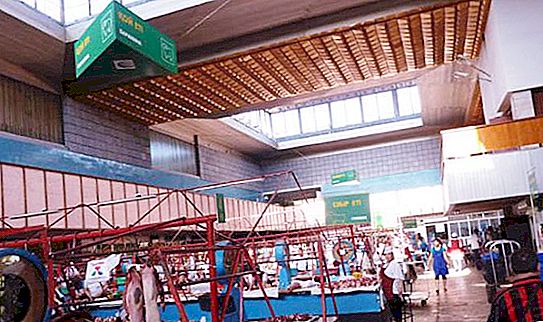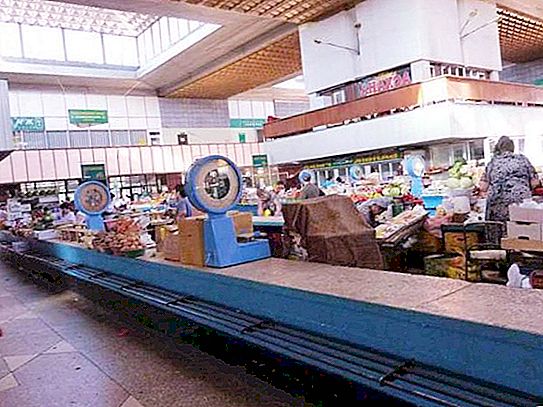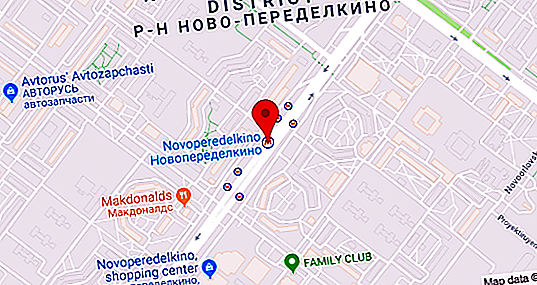The Green Bazaar (Almaty) is rightfully considered one of the main attractions of the southern capital of Kazakhstan. The shopping arcade is always noisy and crowded; city residents rush here on any day of the week to buy fresh produce, as well as manufactured goods from clothing and shoes to furniture and building materials. The central market, which has more than a century of history, is also popular with tourists. Here you can buy original souvenirs and taste the dishes of national cuisine.

The history of the shopping center
The Green Bazaar (Almaty), whose address has remained constant for many decades, is located at the intersection of Zhibek Zholy streets (formerly M. Gorky) and Zenkova. On this site in 1875 was built Gostiny Dvor, consisting of only two pavilions. The customer and sponsor of the construction was the merchant Rafikov - one of the most influential people of that time.
Present-day Almaty until 1921 was the city of Verny, the southern outpost of the Russian Empire. Caravan routes passed here, and Vernensky Gostiny Dvor gave visiting merchants a temporary shelter, allowed them to relax in front of a long road, enjoy delicious food and hot aromatic tea.
Local merchants smartly offered customers goods for every taste: fresh herbs, vegetables, cereals, clothes, firewood and other items needed in everyday life. Horse-drawn carts stood in friendly rows in the square in front of the market, cabbies vied with each other to shout out at shopping people to ride home with a breeze.
The period of oblivion and rebirth
Seventeen years after the founding of the Gostiny Dvor, a strong earthquake occurred in the city, as a result, many buildings were destroyed, and the pavilions of the merchant Rafikov did not survive. Before the October Revolution, there were several bazaars of various kinds in Verny selling various types of goods.

They forgot about the multifunctional Gostiny Dvor for many years. Already during the Soviet era, in 1927, it was decided to put covered wooden shelves in its place so that the peasants could sell here the products brought from the surrounding villages. In official papers, the shopping arcade was called the Central Collective Farm Market, but the people gave the former Gostiny Dvor a simpler name. So the Green Bazaar (Almaty) appeared.
Reconstruction and modernization
The market acquired a more modern look in the seventies of the last century. In place of the wooden shelves, a multi-level capital building was erected with underground storages, counters for trade in products, pavilions with industrial goods. The structure of the Green Bazaar includes a shop "1000 little things", car parking, summer tents and stalls. The building, designed by Kazakhstani architects, was recognized as one of the most technologically advanced and functional markets in the Soviet Union.
Oriental flavor and friendship of peoples
Noisy bustle reigning between the malls, in many ways resembles the atmosphere of fabulous oriental bazaars. The counters at any time of the year are full of fresh vegetables, fruits, dairy and meat products. Here you can taste the real Kazakh koumiss and beshbarmak, treat yourself to Uzbek pilaf, Tatar belyashi, Caucasian kebab and shawarma. There are pavilions at the Green Bazaar where Koreans sell dishes of their national cuisine. Spicy salads from cabbage, carrots, radishes are very popular among buyers. Endless rows with crispy nuts, aromatic dried apricots, prunes and other dried fruits attract people of any gender and age.

In Soviet times, there was even such a joke: as long as you go around the Green Bazaar from edge to edge, you get enough to eat and drink. The thing is that merchants allowed customers to try any edible products without requiring money for it. Market stalls were never empty, even in the harsh war years and bad years on the eve of the collapse of the Soviet Union.




